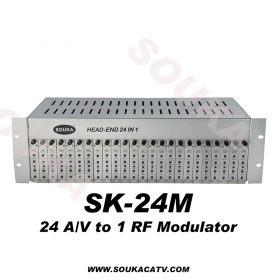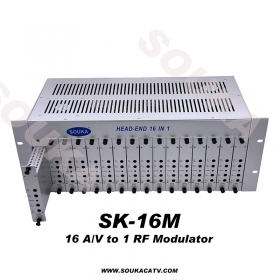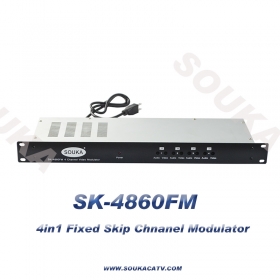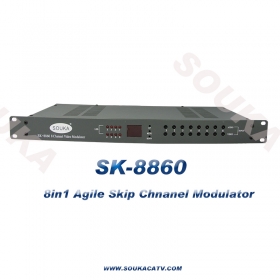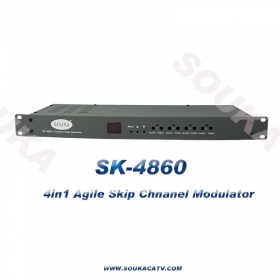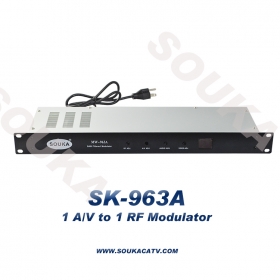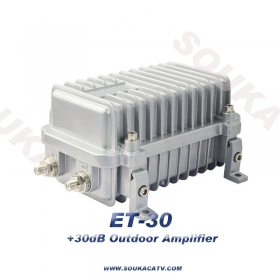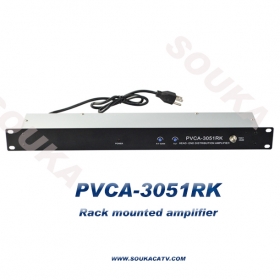
A signal can be anything like a sound wave which comes out when you shout. This shout can be heard only up to a certain distance. But for the same wave to travel over a long distance, you’ll need a technique which adds strength to this signal, without disturbing the parameters of the original signal.
HDMI Encoder Modulator,16in1 Digital Headend, HD RF Modulator at Soukacatv.com
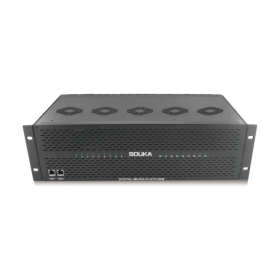
SKD3013 3 Channel HD Encode Modulator
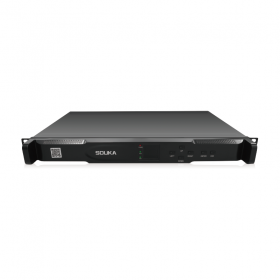
SKD121X Encoding & Multiplexing Modulator
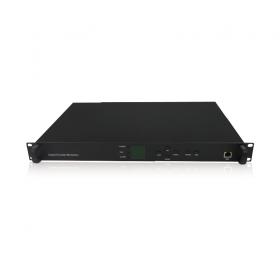
SKD19 Series 1U Rack 12CH Encode Modulator
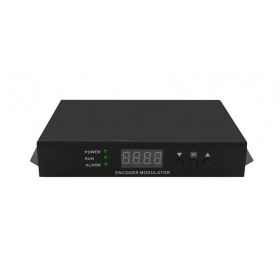
Household Universal Encoding & Modulation Modulator
What is Signal Modulation?
A message carrying signal has to get transmitted over a distance and for it to establish a reliable communication, it needs to take the help of a high frequency signal which should not affect the original characteristics of the message signal.
The characteristics of the message signal, if changed, the message contained in it also alters. Hence it is a must to take care of the message signal. A high frequency signal can travel up to a longer distance, without getting affected by external disturbances. We take the help of such high frequency signal which is called as a carrier signal to transmit our message signal. Such a process is simply called as Modulation.
Modulation is the process of changing the parameters of the carrier signal, in accordance with the instantaneous values of the modulating signal.
Need for Modulation
The baseband signals are incompatible for direct transmission. For such a signal, to travel longer distances, its strength has to be increased by modulating with a high frequency carrier wave, which doesn’t affect the parameters of the modulating signal.
Advantages of Modulation
The antenna used for transmission, had to be very large, if modulation was not introduced. The range of communication gets limited as the wave cannot travel to a distance without getting distorted.
Following are some of the advantages for implementing modulation in the communication systems.
- Antenna size gets reduced.
- No signal mixing occurs.
- Communication range increases.
- Multiplexing of signals occur.
- Adjustments in the bandwidth is allowed.
- Reception quality improves.
Signals in the Modulation Process
Following are the three types of signals in the modulation process.
Message or Modulating Signal
The signal which contains a message to be transmitted, is called as a message signal. It is a baseband signal, which has to undergo the process of modulation, to get transmitted. Hence, it is also called as the modulating signal.
Carrier Signal
The high frequency signal which has a certain phase, frequency, and amplitude but contains no information, is called a carrier signal. It is an empty signal. It is just used to carry the signal to the receiver after modulation.
Modulated Signal
The resultant signal after the process of modulation, is called as the modulated signal. This signal is a combination of the modulating signal and the carrier signal.
Types of Modulation
There are many types of modulations. Depending upon the modulation techniques used, they are classified as shown in the following figure.
The types of modulations are broadly classified into continuous-wave modulation and pulse modulation.
Continuous-wave Modulation
In the continuous-wave modulation, a high frequency sine wave is used as a carrier wave. This is further divided into amplitude and angle modulation.
- If the amplitude of the high frequency carrier wave is varied in accordance with the instantaneous amplitude of the modulating signal, then such a technique is called as Amplitude Modulation.
- If the angle of the carrier wave is varied, in accordance with the instantaneous value of the modulating signal, then such a technique is called as Angle Modulation.
The angle modulation is further divided into frequency and phase modulation.
o If the frequency of the carrier wave is varied, in accordance with the instantaneous value of the modulating signal, then such a technique is called as Frequency Modulation.
o If the phase of the high frequency carrier wave is varied in accordance with the instantaneous value of the modulating signal, then such a technique is called as Phase Modulation.
Pulse Modulation
In Pulse modulation, a periodic sequence of rectangular pulses, is used as a carrier wave. This is further divided into analog and digital modulation.
In analog modulation technique, if the amplitude, duration or position of a pulse is varied in accordance with the instantaneous values of the baseband modulating signal, then such a technique is called as Pulse Amplitude Modulation (PAM) or Pulse Duration/Width Modulation (PDM/PWM), or Pulse Position Modulation (PPM).
In digital modulation, the modulation technique used is Pulse Code Modulation (PCM)where the analog signal is converted into digital form of 1s and 0s. As the resultant is a coded pulse train, this is called as PCM. This is further developed as Delta Modulation (DM), which will be discussed in subsequent chapters. Hence, PCM is a technique where the analog signals are converted into a digital form.
Established in 2000, the Soukacatv.com main products are modulators both in analog and digital ones, amplifier and combiner. We are the very first one in manufacturing the headend system in China. Our 16 in 1 and 24 in 1 now are the most popular products all over the world.
For more, please access to https://www.soukacatv.com.
CONTACT US
Company: Dingshengwei Electronics Co., Ltd
Address: Bldg A, the first industry park of Guanlong, Xili Town, Nanshan, Shenzhen, Guangdong, China
Tel: +86 0755 26909863
Fax: +86 0755 26984949
Mobile: 13410066011
Email: [email protected]
Source: tutorialspoint
